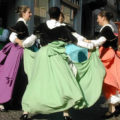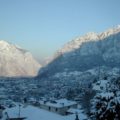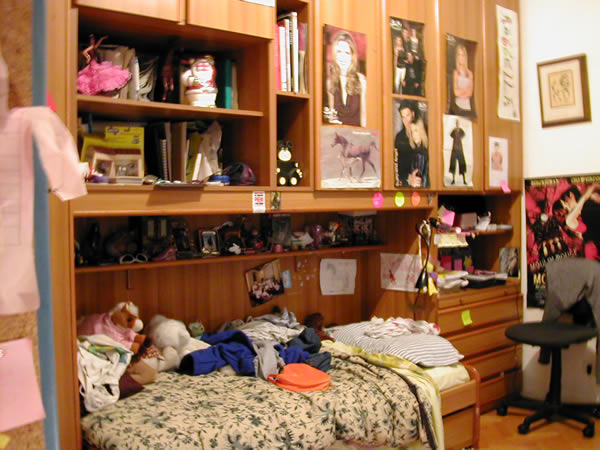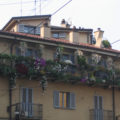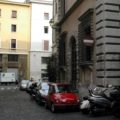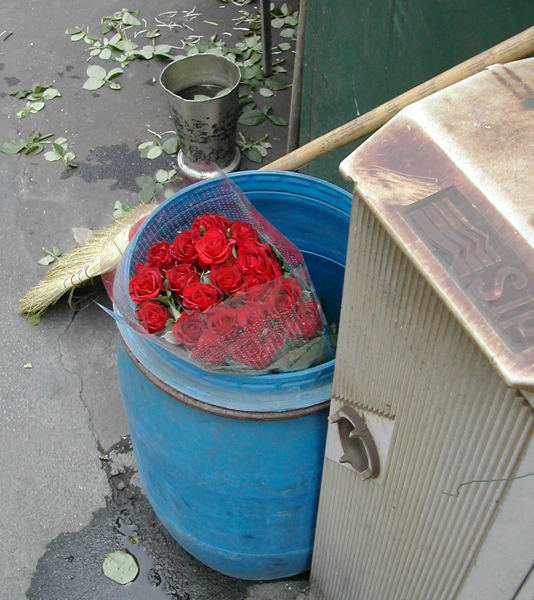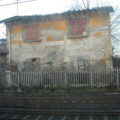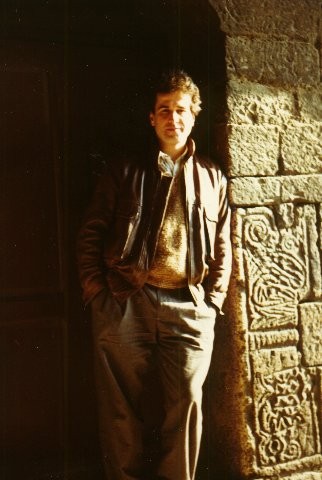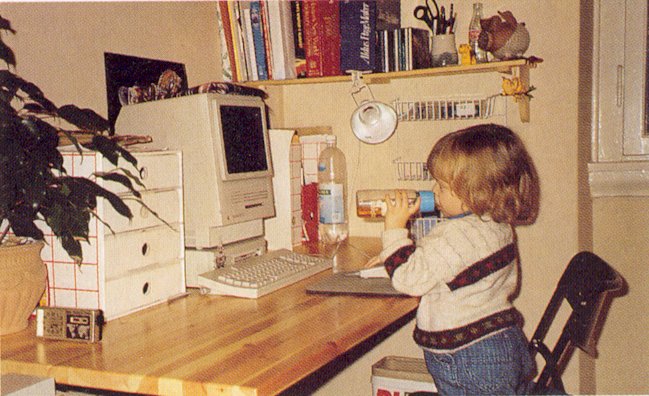Our Thanksgiving dinner was, if I say so myself, epic. I printed out the menu in that fancy font that restaurants always use, so people wouldn’t have to ask me what they were eating; here, of course, I’ve added extensive notes.
Antipasti Vari (various antipasti) – Paola brought mini breads, we supplied salame. I didn’t do much on antipasti because so much other food was coming.
Tacchino al Forno (oven-roasted turkey) – The guests were mostly Italian, many of whom had never seen a whole turkey cooked American style. By American standards, this was a very titchy turkey – less than 13 pounds. In the US you can select from a whole range of turkey sizes; here in Italy, you either take the small female (which I did) or the humungous male. The smaller one turned out to fit all right in the 40 cm roasting pan I had bought.
I used some American technology, a Reynolds oven bag that I bought in the US two years ago on Sue’s recommendation. I filled the turkey cavity with mandarin oranges, onions, and herbes de Provence; we didn’t eat this filling, but it helped produce marvellous gravy.
Ripieno di Pane al Mais con Marroni (cornbread stuffing with chestnuts) – A Martha Stewart recipe, bless her. Martha expected me to have canned or frozen chestnuts. Here in Italy, in season, you can find fresh chestnuts in the woods yourself (difficult – everyone else wants them, too!) or buy them at the supermarket, which I did. I then roasted them in the oven and peeled them. Labor-intensive, but worth it. In my opinion, roast chestnuts by themselves smell a lot better than they taste, but when you cook them with meat or in a stuffing like this, they’re heavenly. Stuffing is unknown in Italy, and turned out to be very popular.
Insalata di Finocchio e Mela (salad of fennel and apples) – Another thanks to Martha. Everyone loved the unusual combination.
Puré di Broccoletti e Spinaci (broccoli and spinach puree) – Recipe from The New Basics Cookbook by Rosso and Lukins. Not the most popular dish on the table, especially with my family since I had made a test batch last week and we’d already had enough of it, though we liked it a lot the first time around. I’ve frozen the leftovers to eat when we’re no longer sick of it.
Fagiolini con Gorgonzola e Noci (green beans with gorgonzola and walnuts) – New Basics again, easy and tasty.
Puré di Patate (mashed potatoes) – Everyone loves €˜em. Fortunately, I had help with peeling and chopping 4 kilos of potatoes.
Selezione di Formaggi con Salse (selection of cheeses with chutneys and honey) – One of the guests brought cheeses, and I had also bought some, plus I had made two chutneys, tomato and dried apricot. Don’t be overly impressed – chutney is very easy to make. These recipes were from Madhur Jaffrey. We also had dark honey (from chestnut flowers), which goes well with many cheeses.
Dolci (sweets) – Maryellen brought a wonderful pumpkin pie which she made completely from scratch (canned pumpkin is not widely available here), Elisabetta made a scrumptious chocolate cake with pears – You’ve never had that? It’s an Italian tradition. You put thin slices of fresh pear into a fairly standard chocolate cake (it may be necessary to correct for moisture; I have not actually done this myself) – it’s a wonderful combination. Rossella had made chocolate chip cookies and brownies, but we never even got to the brownies. Her classmates have been happy to polish those off for us.
Recipe Links
Martha Stewart (and many others)


